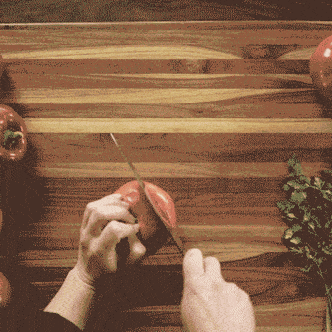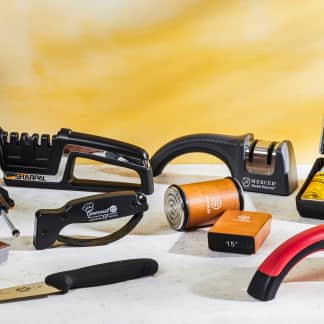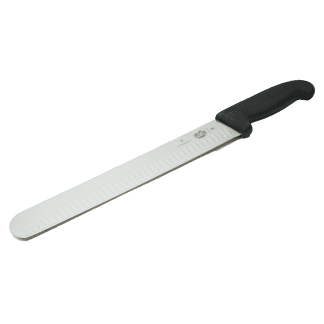We’ve all sat at holiday tables watching our host put on a show before carving the roast, slashing a knife in the air, back and forth, against a honing rod—swish, swish, swish. It sure looks impressive, but I’ve always secretly wondered: Does that really sharpen a knife?
To find out, I bought nine honing rods. All had the same basic design, a sticklike rod with a handle on one end. The rods themselves ranged from 8 to 12 inches long and were made of steel, ceramic, or diamond-coated steel. Their surfaces varied, ranging from smooth to ridged to a combination of textures. The most unusual model was a handle with two interchangeable rods—one diamond-coated steel, the other ceramic. To test them, I bought nine copies of our favorite chef’s knife, a sheaf of copy paper, dozens of tomatoes, and a glass cutting board (the fastest way to dull any knife) and headed to the kitchen.
To this honing novice, everything about this tool was confusing, starting with the terminology. When I researched “honing rods,” “honing steels,” “sharpening steels,” and “sharpening rods,” I found that there was no industry consistency, with some sources insisting that these were different tools and others using the terms interchangeably. Did these tools all perform the same function? I included some of every type to find out.

























